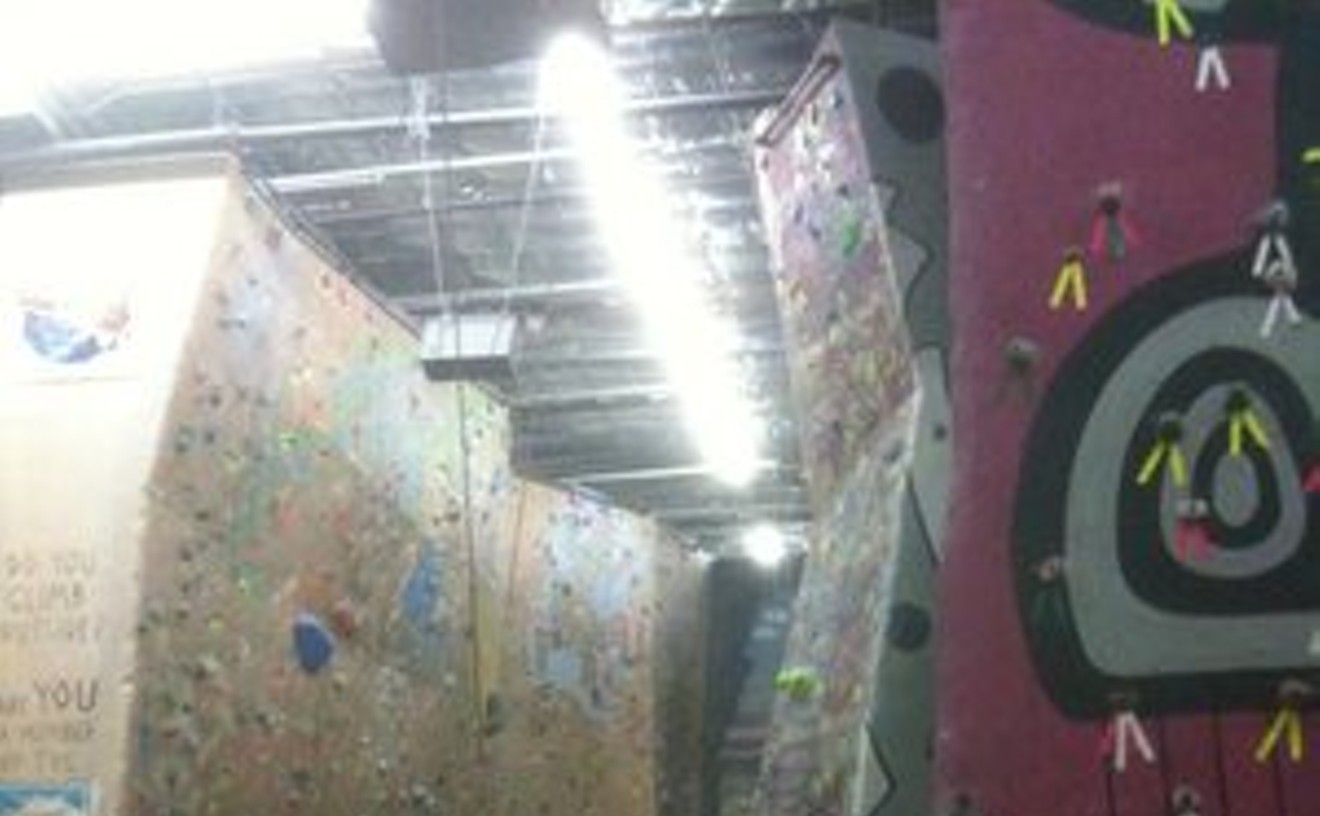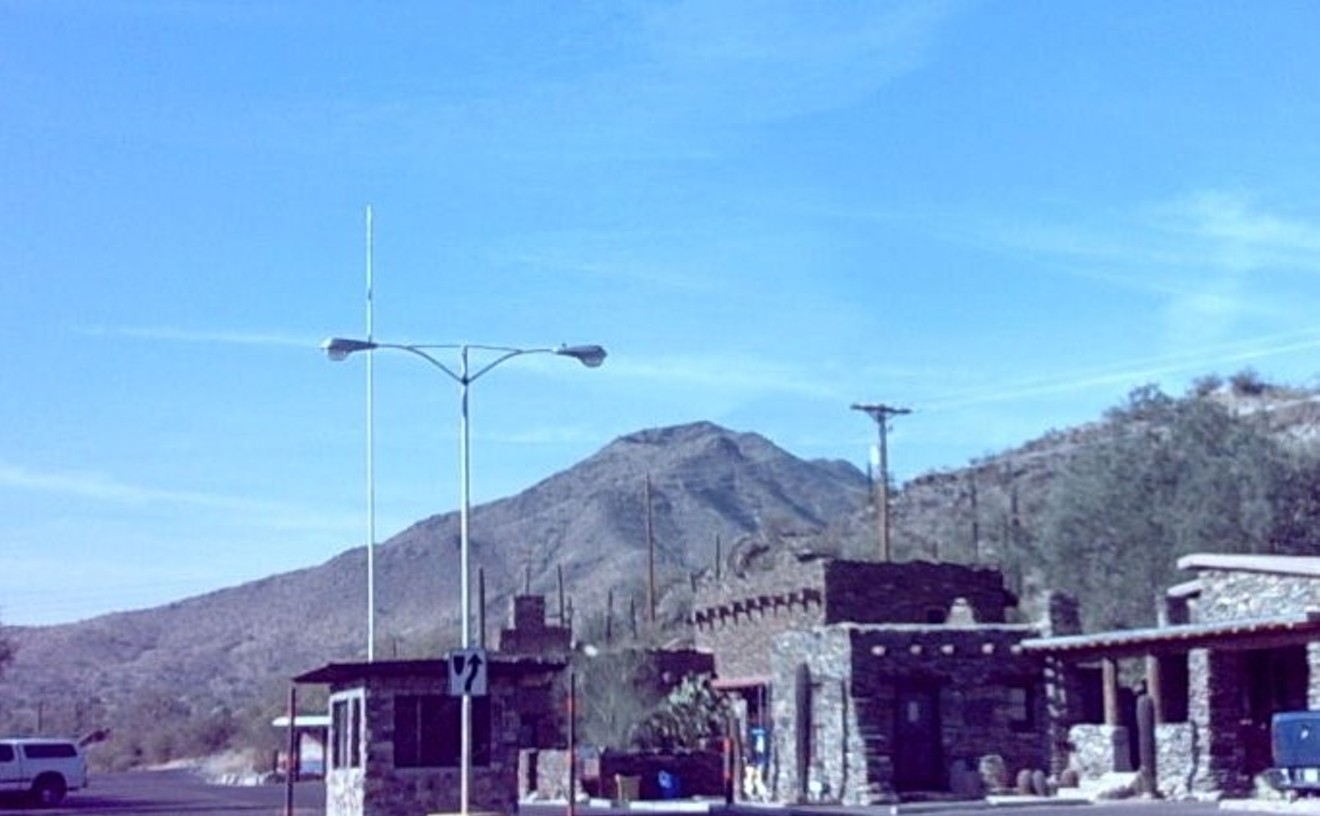BEST THING TO HAPPEN TO GOLF SINCE THE CREATION OF THE 19TH HOLE
BlueBallSports' "Putt-Her"
BEST PLACE TO PLAY TENNIS
Scottsdale Athletic Club

Non-members are welcome for lessons and clinics by club pro Jarek Jabczynski, a world-ranked player and member of the Polish Davis Cup team.
And no, we don't know how many Polish tennis players it takes to win a Davis Cup match.
- 8225 E. Indian Bend, Scottsdale, 85250 Map
- 480-344-0600
- www.scottsdaleresortandathleticclub.com
BEST PLACE TO CLIMB THE WALLS
Phoenix Rock Gym

Phoenix Rock Gym was the first indoor climbing facility in the state, and still carries the most cred with the outdoor extremists. On weeknights, once the kids have cleared out, the 15,000-square-foot mini-canyon is filled with Dief's pro bouldering buddies. But the 17-foot overhang in the spacious beginners' area is designed to bring home the thrill of the big-time climb to the lil' lowlanders. "The kids love it, 'cause when you fall, you kind of swing out, and go for a ride," Dief says. "As long as you've got a rope on, falling is fun!"
- 1353 E. University Dr., Tempe, 85281 Map
- 480-921-8322
- www.phoenixrockgym.com
BEST DAY HIKE
Lost Goldmine Trail
BEST KILLER HIKE
Reavis Ranch Trail

One of the longest, meanest and most rewarding hikes in the Superstitions begins at the Reavis Ranch Trailhead. From this trailhead, you can work yourself deep into the wilderness and onto several of the area's most scenic walks.
Twelve miles in, in Roger's Canyon, you'll reach one of the finest Salado cliff dwellings in the region. Vandals apparently aren't willing to hike 24 miles round-trip. The cliff dwellings are in pristine shape.
Obviously, this is not a hike for the weak or ill-prepared. Take all precautions necessary for a long, difficult hike in the desert. There are many switchbacks, washouts, sharp drop-offs, sharp rocks and other obstacles that make this trip not only one of the most beautiful in the area, but also the most dangerous.
- Superstition Mountains, Tonto National Forest Highway 88, Scottsdale, 85257 Map
- 480-610-3300
- www.arizonahiking.org/index.php/component/content/article/84-superstition-and-mazatzal-wilderness/194-reavis-ranch
BEST SHABBY CHIC HIKE
Papago Park

Oh, how we hate to give this away, but here's our usual route (which is, by the way, unmarked and unnamed): After parking at the landmark known as Hole-in-the-Rock, head west by northwest toward the Big Buttes on McDowell Road. After you cross Galvin Parkway and close on the Buttes, you'll strike a trail that takes you gently around them, or you can path-find your way over them, which is technically quite challenging and a heckuva lot more fun. Once past the Big Buttes, head due south toward Saddle Butte. Climb up to the saddle and then scramble down the other side. Head south by southeast across the washboard. Re-cross Galvin and head due east, where you'll soon find yourself in the Phoenix Zoo parking lot. Look to your left for the nuclear pond and follow its southern flank to another trail that borders the north side of the zoo. Your next landmark -- no, it's not a desert mirage -- is the odd-duck pyramid, situated incongruously upon a small butte, which houses the corpse of Arizona's first governor, George W.P. Hunt. From the pyramid, look north toward Hole-in-the-Rock and set your star by it.
We usually finish with a breathtaking 360-degree view of the Valley from atop the Rock, followed by a windows-down, moon-roof-up, stereo-blasting drive on Galvin, the Valley's only truly crooked street. Ah, but that's another story . . .
- 625 N. Galvin Parkway, Phoenix, 85004 Map
- 602-256-3220
- www.phoenix.gov/parks/hikepapa.html
BEST HIKE FOR THE FAMILY
South Mountain Park's Telegraph Pass Trail

- 10919 S. Central Ave., Phoenix, 85042 Map
- 602-262-7393
- www.phoenix.gov/parks/southmnt.html
BEST FALL DAY TRIP FOR THE FAMILY
Boyce Thompson Arboretum State Park

The 323-acre Arboretum, founded in the 1920s by mining magnate Colonel William Boyce Thompson, is the state's oldest and largest botanical garden. And beyond that, it's arguably the state's greatest place for a leisurely stroll.
This year, thanks to plentiful rains, the colors should be particularly beautiful. Arboretum officials estimate the peak color season will be from November 20 through December 5.
Thanksgiving weekend, the Arboretum will be hosting its annual fall color festival with music, storytellers, apple cider and numerous guided tours. It's a great event for families with guests in town for the holidays.
- 37615 Highway 60, Superior, 85273 Map
- 520-689-2811
- www.wildlifeviewingareas.com/wv-app/ParkDetail.aspx?ParkID=102
BEST SPRING DAY TRIP FOR THE FAMILY
Picacho Peak State Park

One of the most spectacular shows of color, and one of the most easily accessed, is Picacho Peak State Park 60 miles south of Phoenix, which, if you didn't know, is that giant solitary mountain you nearly run into on your way to Tucson.
During peak wildflower season, drivers along I-10 have been known to stop along the freeway to gaze at the outbreak of Mexican gold poppies along the mount's eastern slope.
This isn't smart. Better to come into the state park and take one of several trails allowing you to stroll amid the yellow-orange meadows.
At which point you'll realize the poppies aren't alone. A host of other beautiful, albeit more subtle, flowers dot the historic peak throughout the spring.
The park is open from 8 a.m. to 10 p.m. The trails close at sunset.
- off Interstate 10 exit 219, Picacho, 85241 Map
- 520-466-3183
- www.azstateparks.com/Parks/PIPE/index.html
BEST DRIVE BACK IN TIME
The Apache Circle Route
President Teddy Roosevelt described the route as "one of the most spectacular, best-worth-seeing sights in the world." It's a gem no matter what time of year, although late summer can pose extra hazards from monsoon rains and washouts. The drive is doable by passenger car, but is best done in an SUV. The descent down a narrow gravel road into Fish Creek Canyon is one you'll never forget, and is guaranteed to scare the wits out of Aunt Minnie from Queens. Your guests may want to slit your throat before you reach historic Roosevelt Dam, but by the end of the day they will sing your praises for taking them on the drive of a lifetime.
To get there from Apache Junction, go north on State Route 88 toward Apache Lake. The paved road becomes a graded gravel surface after Tortilla Flat, a tourist trap with all the usual goodies but no pay phone. The less adventurous may want to turn around here. Otherwise, continue to Roosevelt Lake and take State Route 188 toward the twin copper towns of Miami and Globe. Go west on U.S. 60, and be prepared for a wild two-lane mountain road through Devil's Canyon, the Queen Creek Tunnel and on into Superior.





